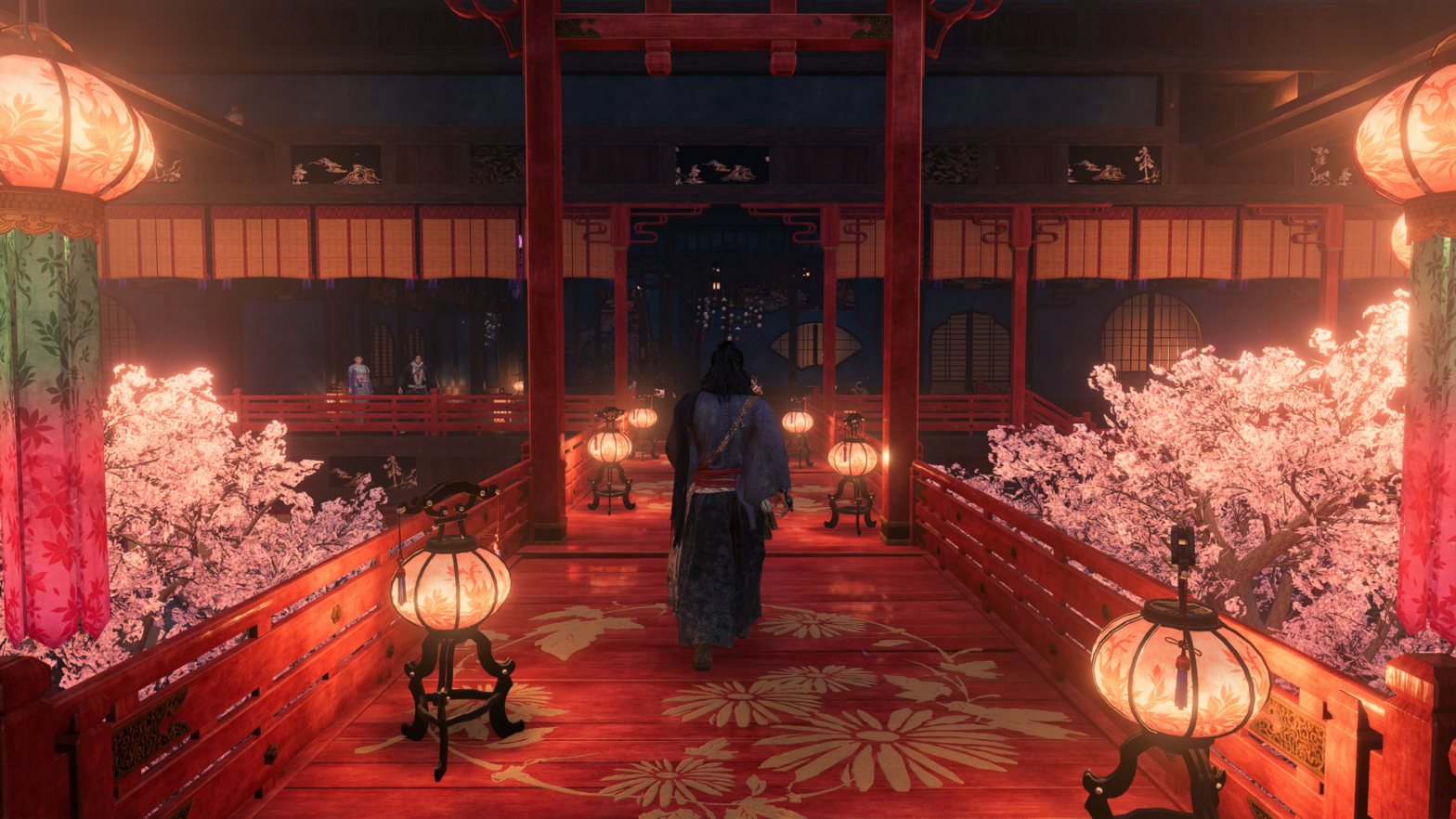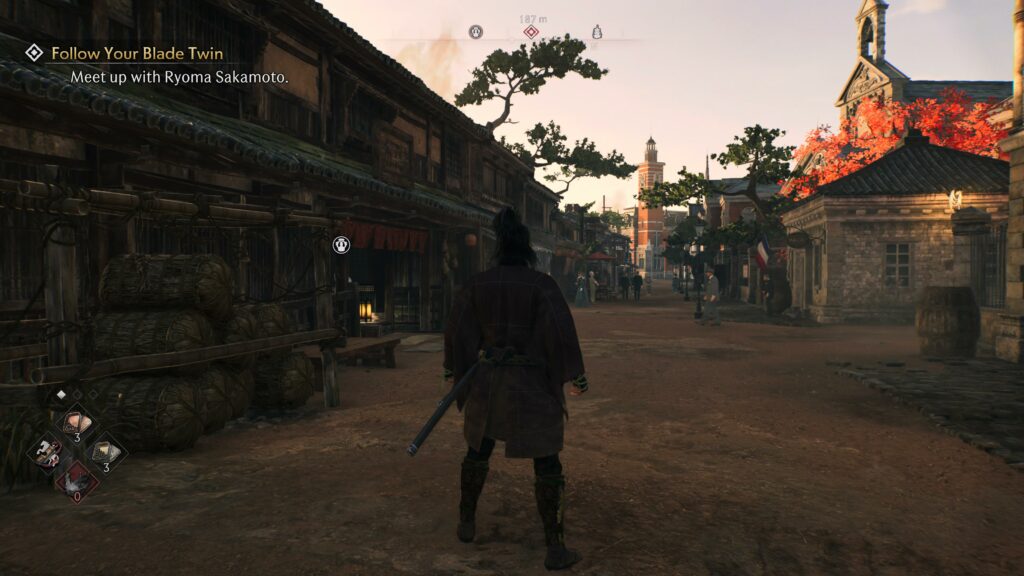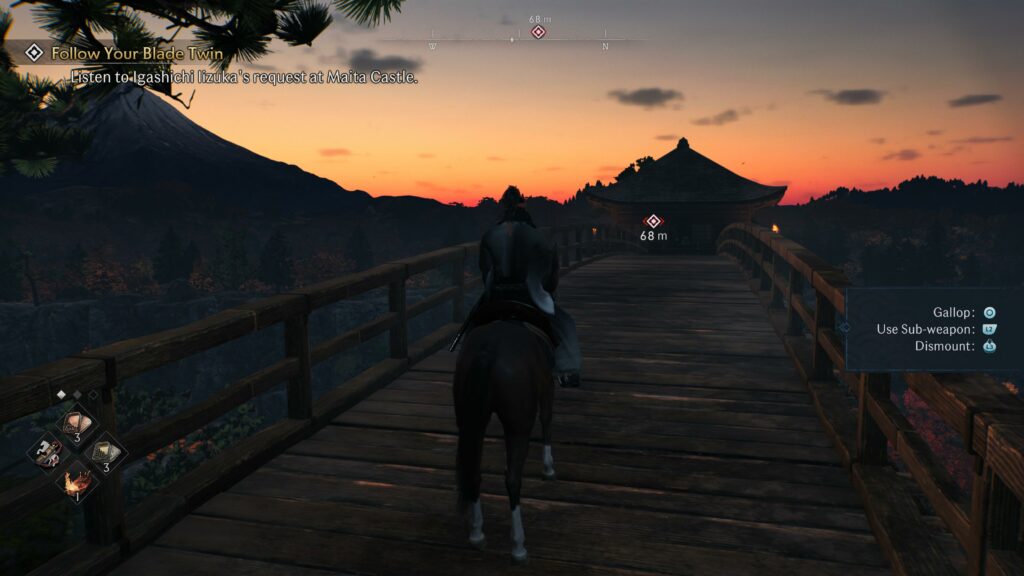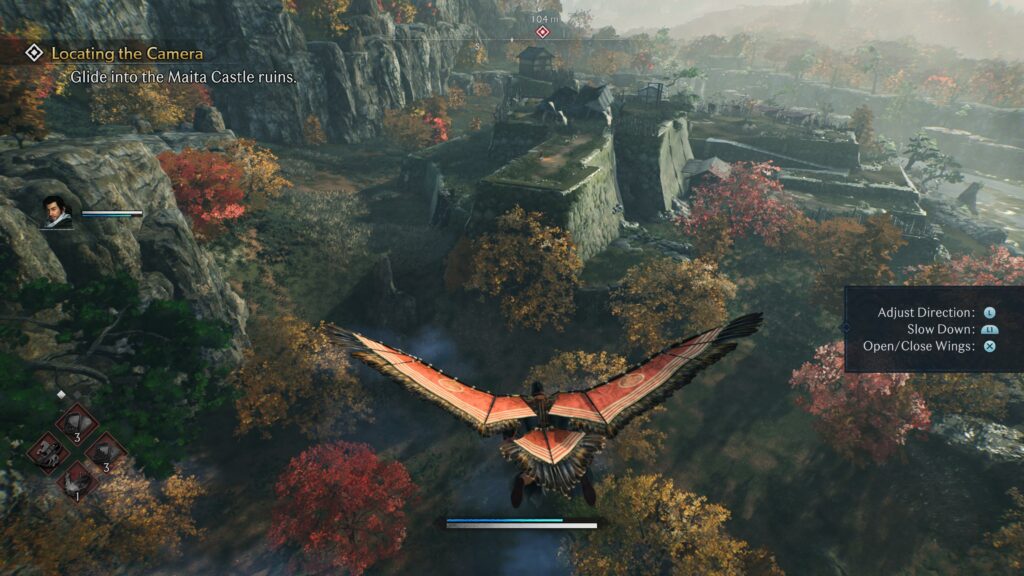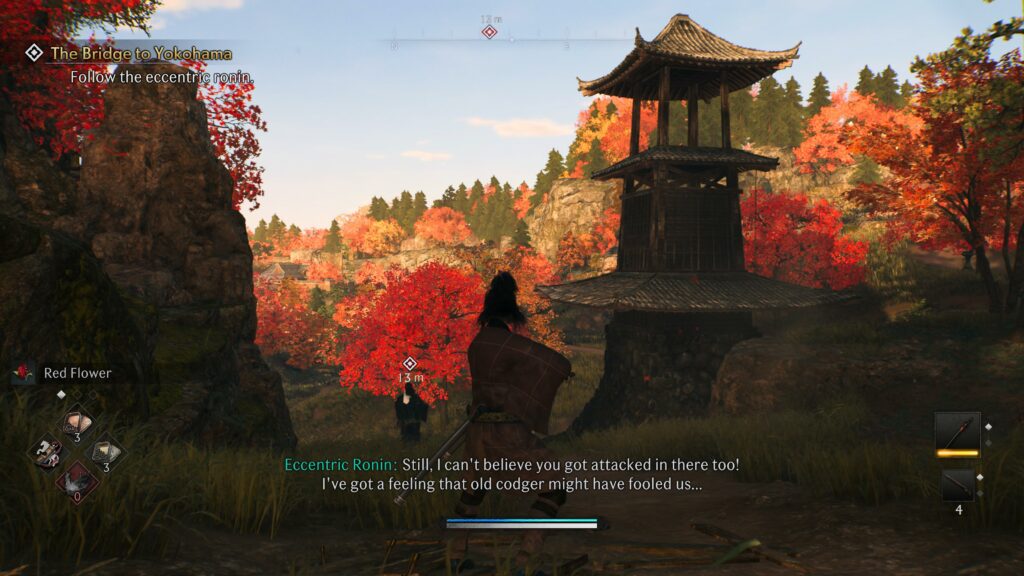You'll love it if:
- Look for enjoyable combat with fair difficutly spikes
- You always wanted a samurai sandbox
Not for you if:
- Look for an exciting story-driven experience
- Crips visuals and immersion are very important to you
Rise of the Ronin is a story-driven action RPG from Team Ninja in collaboration with PlayStation. Set in Japan at the end of the Edo era, it places you at the centre of the events and decisions that will define the country’s future. Our main character is a Ronin who happens to be in the right place at the right time. With no master and no village to go back to, the player is free to travel and explore a beautiful open world, building the legend of a mythical wandering warrior who liberates the rural regions of Japan, and helping shape the future of the country.
After reading this short description, there are certainly a few things that might sound a little off. Many of Rise of the Ronin’s features sound nothing like the classic Team Ninja approach to game design. Rise of the Ronin is the first truly story-driven project from this studio, but it’s also their first attempt at an open world. It’s certainly something we wouldn’t expect from Team Ninja, but the central idea behind the game was enough to beat any doubts. On the other hand, even the plot, as interesting as it is, immediately reminds us of two games we’ve already played, one of which we’ll be playing again in a few months. Either way, we keep an open-minded approach. After watching the trailers from The Game Awards, and also State of Play, I was “sold” on Rise of the Ronin. I was really looking forward to playing this one.
Thanks to PlayStation Greece, we were able to try out Rise of the Ronin two weeks before its release. However, we were only allowed to discuss the first two hours of gameplay, and two hours are not enough to judge a game that the dev team worked on for years. Ten days later, with more hours on the clock, let’s take a closer look at Rise of the Ronin:
TL;DR
Rise of the Ronin is not a bad game. But it’s not a good game either. Team Ninja opts for the safe route with story and gameplay mechanics we’ve seen before, without really trying to give their own spin on things. As a result, Rise of the Ronin ends up being a game you’ll have forgotten about two weeks after you complete it.
All images in this article are in-game screenshots from Rise of the Ronin on PlayStation 5.
Rise of the Ronin – Story
Team Ninja games are not known for their brilliant storytelling. Quite the opposite actually, as their stories are usually all over the place and hard to follow. The climax of the Ninja Gaiden trilogy sees you fighting against military helicopters and robot dinosaurs – slashing through them with your katanas. Don’t even get me started on the evil Statue of Liberty fight. But that’s okay, these aren’t games you’re meant to take seriously. When I saw that Rise of the Ronin is a story-driven RPG, I wasn’t sure how to feel. Having played the game, I’m still not sure how I should be feeling about it.

The Land of the Rising Sun at a crossroads
Our story takes place in an era called Bakumatsu. The events of this period shaped Japan’s path for the next century and laid the foundation for its place in the modern world. With the era of the great feudal lords and their samurai warriors drawing to a close, and the increasingly threatening stance of the West against the formerly isolated empires of the East, Japan’s spiritual leaders and most powerful warriors were called upon to make a joint decision. Will Japan continue its course as a closed and self-sufficient empire, or will it open itself to the world from which it has been sheltered for centuries?
We start from the village of Veiled Edge, famous for its samurai who fight in pairs. After a dangerous mission, however, our partner falls in battle against a powerful “blue” samurai who has sided with the Western imperialists, and our village is destroyed. As the sole survivor, we vow revenge and set out to find that samurai. Our road leads us to Yokohama, a city that seems torn between two orders of things: traditional Japan and the progressive West. There, we meet historical characters of paramount importance to Japanese history, such as Sakamoto Ryouma and Iizuka Igashichi, who take us with them on the great journey to reshape the country.
Along the way, we will encounter many characters who will either follow us or stand against us, depending on the attitude we choose. As we build the legend of the wandering Ronin seeking revenge, our name will travel around the Edo region (present-day Tokyo) and our influence will grow.
Lacking real narrative
The narrative is mainly told through cutscenes and static dialogue. There are only a few times when your companions will tag along while you travel the world, and even fewer times when there is dialogue outside of cutscenes or static conversation scenes. The cutscenes are extremely important, as that’s where the story actually progresses. There are more than a few times that said cutscenes are presented completely out of context. Their style is very dramatic, and despite the fact that this fits the story Team Ninja wants to tell, it doesn’t fit very well with the rest of the game. This is a goofy ahh game in which at one moment you see serious political views clash, and the next your character pops up in the most out-of-pocket outfit.
Your character is a blank sheet when you start Rise of the Ronin. You create your character from the ground up and then choose the stance he takes on all important issues. There is no voice acting for the character, you have to imagine that the answers you choose in the dialogues are your character’s words. The problem is that most of these choices have no real impact. And I don’t mean the outcome of the story, but how they fit into the dialogue. You’ll rarely notice a change in facial expression, the character you create remains almost unchanged from the moment you created them.
You can choose your character’s response to the dialogue each time they are addressed, but there is very little substance in these choices. All that matters in the plot is the faction you choose and whether you choose to show mercy to your enemies or kill everything that comes your way. Don’t be fooled though, the choices are limited and rarely pay off. You can usually choose between two paths when characters address you: being too nice or too rude. This made me wonder what the point of building a dialogue RPG system is if you don’t give the player enough options, and even those few options are of no real value.
Rise of the Ronin would have been a bigger success if it focused on telling the story it wanted to tell, rather than desperately trying to be an RPG. Having a protagonist who didn’t “happen” to get caught up in the events and watching them unfold around him, but instead is the driving force behind the plot, this story would have been entertaining indeed.

I’ve seen this show before
There aren’t many games with samurai protagonists that strictly explore this historical part of the Edo period. Only two titles come to mind. This gives writers a lot of leeway to tell a bunch of stories from that historical period, or even create their own. Yet Team Ninja chooses to use, with a few changes, the same storyline as Like a Dragon: Ishin!, a game in the Yakuza series that was released in Japan in 2014, and only came to the West in 2023 via a remake.
This decision is truly surprising, as someone who follows samurai-themed releases (there aren’t many) is not only likely to have played Like a Dragon: Ishin!, but also done so very recently. And unfortunately, narrative-wise, Rise of the Ronin pales in comparison, leaving a bad aftertaste.

Rise of the Ronin – Gameplay
The gameplay has always been Team Ninja’s strongest point. Their combat is intense and despite the steep learning curve, you hardly ever feel like you’re losing fights for silly reasons. Usually, you’re always one wrong button away from losing, but also one right button away from winning. It’s this dichotomy that makes the outcome of any battle, no matter how frustrating, feel fair. However, like the other elements of game design and plot, we’ve come to expect the combat in Team Ninja games to be over the top and have you fighting menacing monsters, demons and anything else you can imagine. Rise of the Ronin is very down to earth in comparison.

Blade against blade
The enemies you’ll face in Rise of the Ronin are primarily other samurai, swordsmen and other ronins. Whether you come up against them as you explore the world, or in missions, the combat design is truly outstanding. There isn’t much variety between enemies, as the setting is historical in nature, but there is variety in how they come after you. Most enemies can attack you from a distance with bows or firearms, but once you approach them, they draw out their swords.
And so do you, of course, as you have long-range weapons such as rifles, pistols and shurikens at your disposal, but also up to different melee weapons, from single or double swords to spears, which radically change your fighting style. How you approach each encounter is up to you, though generally the stealthy approach is the easiest, especially when facing large numbers of enemies. Within missions, you’ll get to fight bosses, which while quite difficult, never feel impossible to beat.
Melee combat is based on the parry mechanic. By parrying your opponents’ blows, you create gaps in their defense and leave them exposed to multiple hits. The same thing happens to you though, by hitting the wrong button at the wrong time, you can be left exposed for several seconds. The secret is to use your healing supplies correctly and sparingly. You only have a limited supply on each mission before you must resupply, and the right timing can save your butt.

Sophisticated systems
Rise of the Ronin has a fairly complex skill tree system, with two different level systems: XP and Karma. Skills are locked behind the use of skill points (Karma) and attribute points (XP). However, this system can easily be confusing at first, as there is no clear distinction between the skills you unlock with skill points and those you unlock with attribute points. Attribute skills are usually stronger, but since they are in the same “bucket” as the others, they don’t seem as separate and their importance is underestimated.
There are also weapon levels, which you level up as you use each type of weapon, and different stances that change your battle stance, covering your vulnerabilities depending on the enemy you’re facing. It’s very easy to change stances, as well as weapons, during battle, allowing you to adapt your style to the type of enemy in front of you at any given time with ease.
In general, there are far too many systems in Rise of the Ronin. These systems allow you to tailor the experience but also bombard you with unnecessary information and tedious tutorial prompts. It gives a touch that feels more like a sandbox than a story-driven RPG.
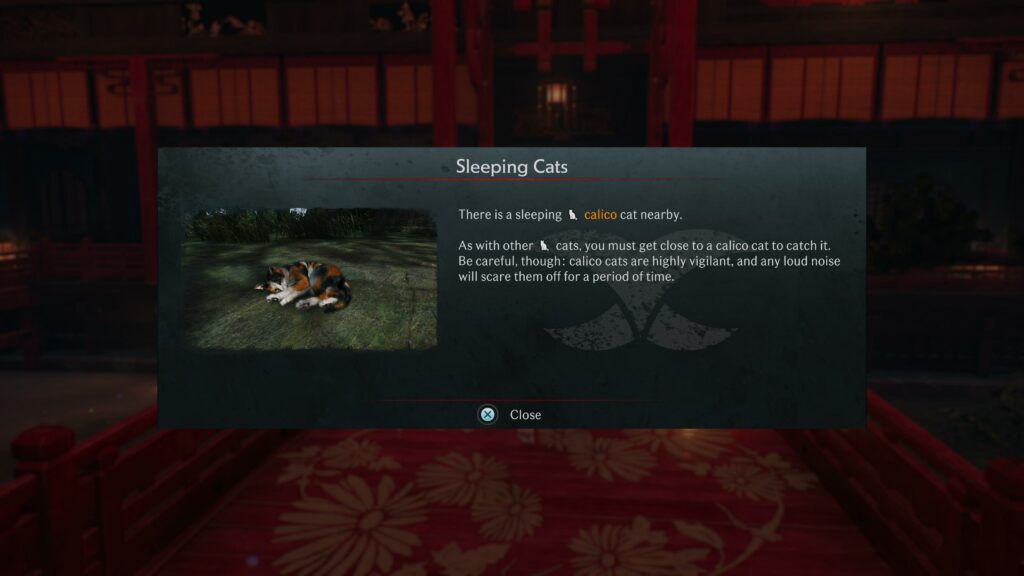

A world with no character
Team Ninja has gotten us used to their games operating through separate levels. You have to finish one level to move on to the next, each level being self-contained. This means you can explore but within the confines of each level. Rise of the Ronin takes on a different approach, with a large open world to explore. Is this to say that Team Ninja has abandoned their usual level design? Not exactly. Most of the missions you’re asked to complete are self-contained levels, accessed via a marker in the open world. Upon starting the mission, you are taken to a “mission start” window, in which you choose your AI partners, representing the companions you’ve collected through the story. Alternatively, you can invite other players to take on the missions in co-op.
Rise of the Ronin allows you to explore the entire region formerly known as “Edo”, where today’s Tokyo is located. The world is beautiful and definitely worth checking out, but since most of the battles and plot points take place in sequences outside of it, the vast open world loses its significance. There are things to do of course, such as “restoring order” in small villages that have been taken over by bandits. By defeating them, the inhabitants return to their homes and you unlock a relationship with each area. Through completing quests, usually of the “go there, kill these guys, collect that resource” type, you gain access to shop discounts and new items.
Speaking of items, this game never stops bombarding you with loot, most of it cosmetic. There are plenty of options and believe me, you can have too much of a good thing. When there are so many options, the new armor you just unlocked stops having any particular value, because you know that in 15 minutes you’ll have unlocked a new set.
Rise of the Ronin – Presentation
Rise of the Ronin doesn’t have the highest level of production. It’s very “gamey”. There’s nothing wrong with that, no one expects all games to follow the cinematic production style. However, the animations and even the art direction of this particular title seem very outdated for 2024.
Below expectations
My problem with the visual presentation in Rise of the Ronin is that it feels like it was made a decade ago. You can feel it as you play, the whole game “feels” clunky. Character movement feels on-the-rails and even within their constraints, it fails to be smooth. Many animations start and end abruptly, and there are no animations for important combat elements, such as the stunned status, where characters sit still for a few seconds. The cutscenes are also a step down from what I expected, as the limited use of facial expressions doesn’t help with dramatic tension, especially when the game is trying to emphasise the dramatic nature of the situations it’s portraying.
The open world is quite beautiful, and in some places, it captures the vibe perfectly, such as in Yokohama’s Entertainment district. In other places though, it seems to use assets we’ve seen before, but now, they feel tacked on as an afterthought.
The sound design, too, is nothing remarkable. The music is pleasant when exploring and the ambient sound is adequate. During combat, the sound of blades colliding is really exciting. However, the voice acting, especially in English, is a complete disappointment. The actors usually sound bored, which ruins the immersion. In addition, the dialogue is not always properly synchronized with the speech animations, mouth movements seem randomized most of the time. Apparently, though, Team Ninja is fixing this in the Day 1 patch of the game.

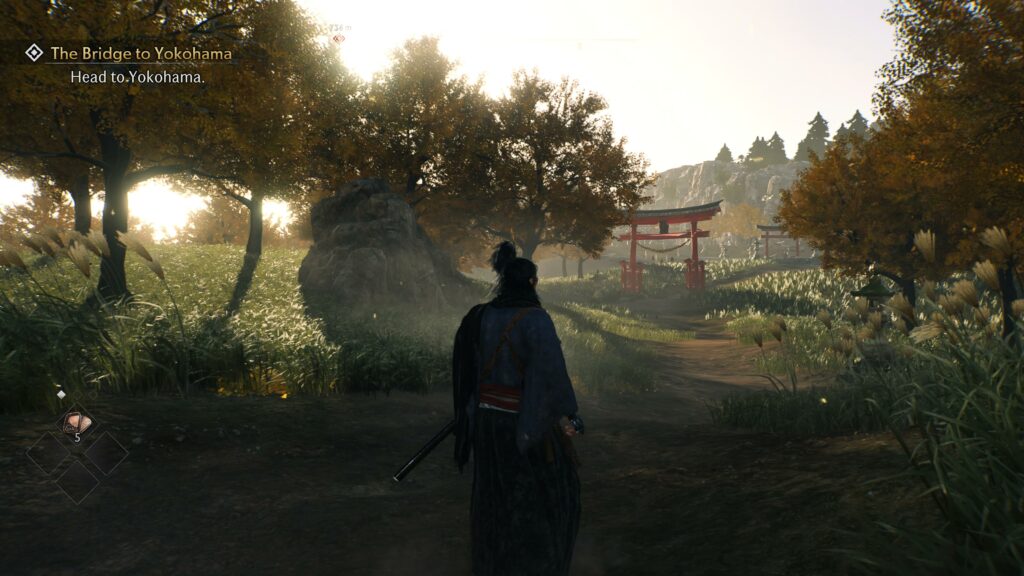
Rise of the Ronin – Conclusions
Rise of the Ronin would have been a great game if it came out in 2014. Last time I checked though, the date was 2024. This particular title tries to be a jack of all trades, but ends up being master of none. It uses ideas we’ve seen before without trying to make them distinct from the competition. The story-driven RPG elements and open-world design are new to Team Ninja’s philosophy, but they’re things that modern game design has been used to for a decade.
In short, Rise of the Ronin does everything the competition does. But no individual part of it is better than the corresponding part of the competing titles. It has no better level design than Sekiro, no better open world than Ghost of Tsushima, and no better narrative than Like a Dragon: Ishin! Rise of the Ronin is so focused on ticking all these imaginary boxes that it forgets to bring any original ideas to the table. It’s not the re-hashed ideas, but the absence of originality that really did this game in for me.
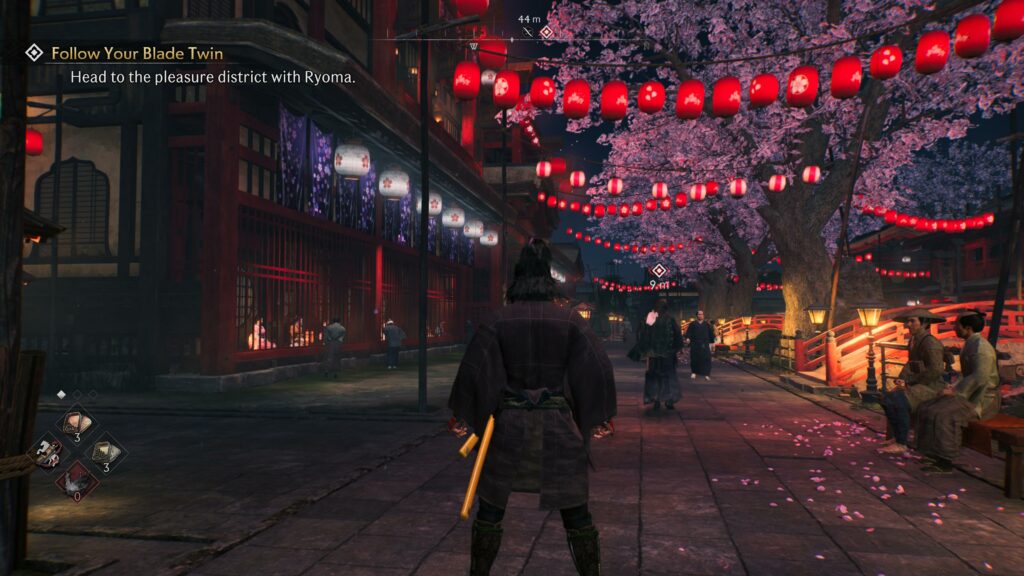
We would like to thank PlayStation Greece for providing the review copy we used.
